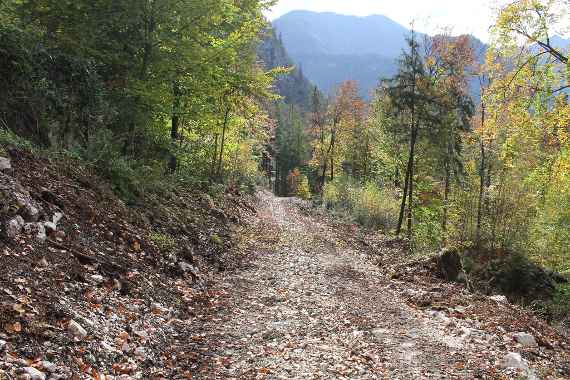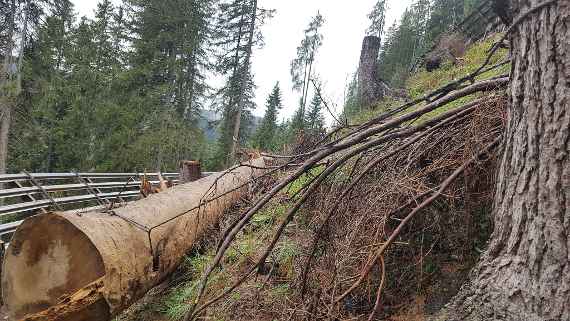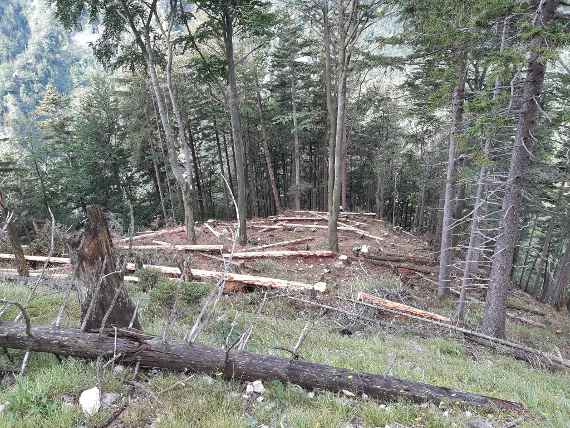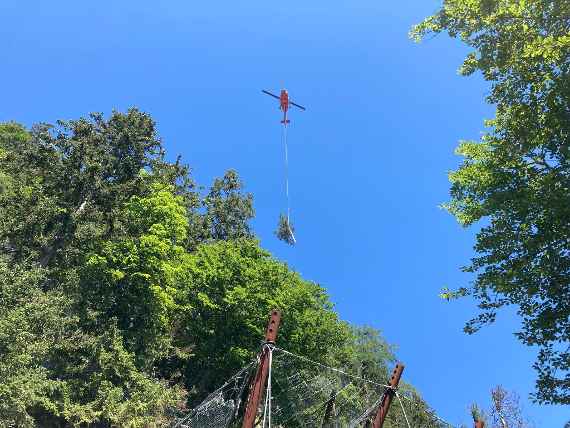In order to ensure optimal protection against natural hazards special management of the forest is required. Top priority are the long-term stability and vitality of the trees. In addition, the availability of a sufficient number of young trees that can grow in an untroubled way is important for the future. Any bare areas must be reforested. In case where a tree is infested by bark beetles, it needs to be felled and the stem debarked to prevent further reproduction of those harmful insects.
Especially on steep mountain slopes, the accessibility by roads is particularly important for the management of protective forests. Forests roads or trailheads provide quick access to the forest, so that forest management measures can be implemented in the required time.
Tractors and other forestry equipment can access the protective forest sites quickly by using forest roads. In addition to the transport of the wood, a good forest access is also decisive for work safety. After all, working with a chainsaw and heavy equipment in steep terrain involves numerous dangers!
In the protective forest the goal is clear: protection against natural hazards! Thus, the felled trees are not primarily used for harvesting timber, the logs often remain in the forest and serve as a natural barrier against rockfall.
In steep protective foreststrees are often felled across the slope. This will increase the surface roughness and also serves as natural rockfall protection. In addition, young still elastic trees are protected against the weight of the snow cover sliding down the slope (snow thrust).
Forest roads and trailheads are not available or can be built everywhere. Here helicopters carry felled trees out of the forest and assist forest management.




